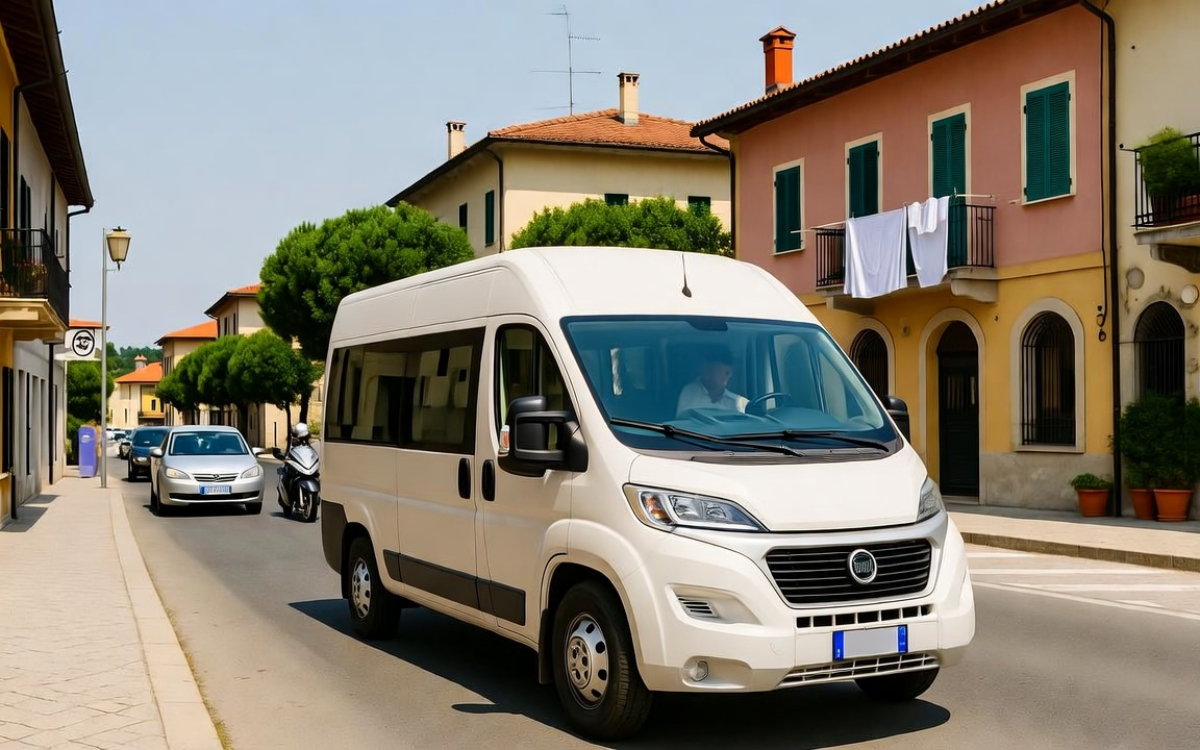


Bringing neighbors closer to their train station

On Monday the 4th of March a new Shotl service was launched in the city of Sant Cugat, Barcelona. After our successful deployment in the neighborhood of Can Barata, which has transported more than 8000 people since July 2017, Sant Cugat city council asked us to launch a second service in Les Planes.
With a population of 1.312 inhabitants, Les Planes is located right on the border between the cities of Sant Cugat and Barcelona and has a train station that connects to both city centers in less than 20 minutes. As Les Planes is located in such a hilly suburban area, the challenge has always been to make it easier for inhabitants to reach the train station: the furthest dwelling is 200 meters uphill and takes 40 minutes to walk to.
Use case for Shotl
Prior to Shotl launching in the area there was a classic bus line which ran a limited service from 07:00 to 22:00 and covered parts of the neighbourhood as follows:
- Central part (where the train station is); service ran every 30 minutes but there were often longer waiting times when the bus had to go to the western part.
- Western part; bus service ran as an extension of the central line’s itinerary which resulted in limited coverage of only 10 times a day.
- Eastern part; no bus service ran at all.
The introduction of Shotl has permitted a reconfiguration of this service in the following ways:
- A flexible Shotl service that connects western and eastern parts to the central area by minibus.
- A classic bus line operating in the central area that runs at a more punctual frequency of 30 minutes all day long (line no longer has to serve western part).

Results
In only 6 weeks, the new Shotl service has attracted a total of 1.141 passengers; this means that over 50 passengers a day have been using the service in just a few short weeks.

On average, passengers only wait 8 minutes once they’ve requested a trip and spend 7 minutes on the vehicle. A conventional line covering all the Shotl stops would have run at a frequency of 40 minutes instead.
Geographically, 75% of the trips are to or from the train station, often serving areas located further away: 39% in the western part (which previously had the classic bus service), 25% in the eastern part (no bus before) and 11% in the central part. A remaining 16% of trips run from the western part to centrally located points (other than the station).
As well as increasing coverage and cutting waiting times in Western and Eastern parts, the operation has also helped to improve the classic bus line running in the central area. Having a more consistent frequency has allowed that service to increase its patronage by up to a 20%.
Previous deployments have succeeded in proving Shotl’s efficiency in areas that have a much more “rounded” shape. Results from the Les Planes launch show that Shotl also helps to improve operational efficiency on bus lines with a very linear route (i.e. east to west) as reaching the furthest stations is only done when requested by a user.
Popular posts
27.10.25
Anti-Cannibalisation Strategies: Making DRT and Fixed Routes Work Together
Anti-cannibalisation strategies ensure DRT complements, not competes with, fixed routes—using geofencing, time controls, and GTFS data to fill service gaps and enhance overall transport efficiency.
Albert Tresserras
28.10.22
Swvl keeps expanding in Barcelona and Málaga
Swvl expands its On-Demand Transit operation into Alhaurín el Grande after successfully moving 240,000+ Passengers with local Public Transit Operators (PTOs) in Malaga and Barcelona.
Albert Tresserras
26.03.24
Future Mobility: Shotl at Intertraffic & AIMAS 2024
As April approaches, the anticipation is building for two significant events that promise to shape the future of transportation: Intertraffic & AIMAS 2024.


